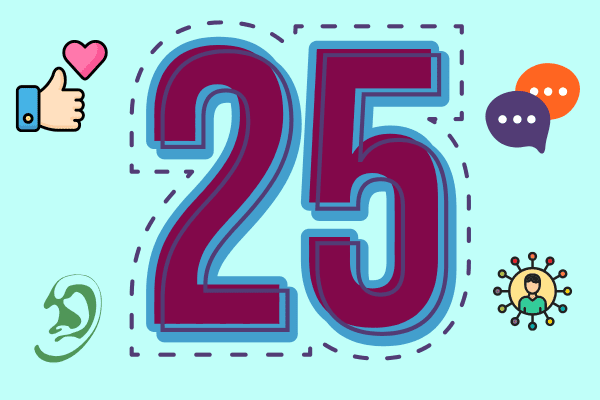A Goal Without a Timeline is Just a Dream
In this article, I’d like to share with you personal goal setting and how to do it effectively. The sources I draw from to share with you the effective guide to personal goal setting are:
- Mindstore – A positive thinking mental programme created by the Scottish visionary Jack Black (Not the actor).
- The Naked Leader – David Taylor wrote an excellent book about leadership and achieving your goals.
- Tony Robins – A worldwide authority in coaching, development and achieving your success.
- The Secret – A fast becoming popular look at the ‘Law of Attraction’ – Thoughts become things.
Most of my experience of goal setting, before I became fascinated and intrigued by it, was making a New Year’s resolution, flipping a coin into a wishing well, or making a wish as I blew my birthday candles out. Whilst these traditions are great for teaching our children ‘passed down’ traditions, do not mistake them for effective personal goal setting.
If you are serious about achieving more through goal setting, find out how to do it properly, which will increase your chances of achieving them.

The 3 P’s of Personal Goal Setting
The grandfather of goal setting, probably without even knowing the genius of what he had said was Muhammad Ali, the boxer. His most famous quote was, “I am the Greatest”. Let’s look at this statement in more depth because the words he used were as important as the words he didn’t use. There are 3 learnings we can take from this powerful goal:
- Personal – “I…” was used which makes the goal personal and making it more effective because the goal was about himself. Ali could have said, “We are the greatest”, to include his supporting team, which would have been much less effective.
- Present – Ali didn’t say, “One day, I’ll be better”. He said, “…am…”, meaning ‘today’. This is important because if you were to have a goal in the future, it would always remain in the future and never be achieved. A goal needs to be in the present day because this will make your goal more effective by having more emotional attachment and by thinking as though your goal is achieved your subconscious will conspire to make it happen.
- Positive – A goal needs to be positive because a positive thought is much more powerful than a negative thought.

96% Helping 4% to Achieve their Goals
There is a famous piece of research about a Harvard class that was revisited some 20 years later after graduating. The conclusion from the research was that the 4% that wrote down their goals achieved them, and that 96% that didn’t write them down, did not achieve them. Leading to the phrase that ‘96% of the population are simply helping the 4% to achieve their goals’.
I subsequently read that a researcher tried to track down the original research and was unable to, suggesting that the conclusion was just fiction. The question has to be, ‘Why did this piece of research become such folklore?’. I believe that it is because there is so much truth in writing down our goals to give us a better chance of achieving them, that we simply needed some research to prove the theory.
Writing down your goals is a very effective means of improving your chances of success. There are 3 reasons why; 1. Putting pen to paper is a bit like signing your name – You are making a declaration that cannot be changed, 2. You are engaging all 3 input modes; Kinesthetic – Writing the goal, Visual – Seeing it being written, and Auditory – Saying the goal out loud as your write it, and 3. Consistency – You are seeing the same goal each time you look at it, rather than thinking of it with a slightly different one each time, depending on how you feel that day.
‘A Better Time Manager’

In the courses that we teach about Time Management many delegates respond to the question, ‘What is your objective for this course today?’, with ‘To be a better time manager’. At this point, the tutor then shares with them the ‘Eat that Frog’ technique and declares the objective achieved and the course ends 7.5 hours early!
The point is about being specific about what you want. Be very specific about your goal. If one of your goals is about a car then it cannot be ‘To have a car’ because you may get a burnt out and abandoned car on your lawn – Job done. As yourself questions to ‘tie-down’ the goal, for examples ‘Which car?’, ‘What colour?’, ‘What specification?’ and ‘By what date?’.
Sticky Learning ® is 7 times more effective than 1-day training courses. Plus, you will get a Chain of Evidence proving your Return on Investment. Discover soft skills training that changes behaviours long term.

‘To Have’, ‘To Be’, or ‘To Do’
All goals fall into one of these categories; ‘To Have’, ‘To Be’, or ‘To Do’. Each one is either ‘To Have’, e.g. a car, or it is ‘To Be’, e.g. ‘An actor’, or ‘To Do’, e.g. Swim with Dolphins’. This may help you when you are considering your goals because most people consider goals that are ‘To Have’. Thinking about them in all 3 categories will help you to have a balance, especially a goal about ‘To Be’. This particular one could be about describing your life as you want it to be.
How Many Goals?
The short answer is ‘As many as you believe you want’. The long answer is that I believe that the maximum number is 7. This number is very profound, supported by so many references, from the Seven Wonders of the World to Seven Days of the Week, to Brain Waves on 7 hertz, to the Seven Dwarves (!). Jack Black of Mindstore, suggests that we begin by writing down 30 goals and then reducing them to 7 because he says that if we achieve the 7, we’re likely to achieve the rest anyway. And of course, he’s right – Aim for a few and achieve them all.
4 Steps to an Effectively Written Goal

Take a sheet of A4 paper or open a file – Powerpoint is great for this. This simple steps below hides the power of effective goal writing because all the knowledge from the experts above is reduced to 4 simple steps;
- A. Write your personal, present and positive statement here. Ali’s was, “I am the Greatest”.
- B. Draw or copy or cut out, and place a rich image of your goal. This has to have a real emotional connection for you. An image that will make you smile or your heart skip a beat. Next to the image, the 5 squiggly lines represent details, e.g. The blue one with the 5-litre engine and the chrome doodas.
- C. Write why you want this goal, considering the benefits to others, if appropriate. A word of warning here, be careful of being ‘needy’. I cannot write it better than is said in this post.
- D. Add a date because a goal without a date is just a dream and like throwing a penny into an old wishing well.
Before the Zzz’s…
Put your goal, using the template above, somewhere that you can see it every day or in a place that you know that you’ll grab it and look at it every day. In the film ‘Collateral’ starring Tom Cruise, the taxi driver had a place he went to every day to get him away from driving his cab in the busy streets of New York City – A postcard with a picture of a tropical island that he kept attached to the sun visor. All he needed to do was flip down the sun visor and it made him smile. A little like your goal will do for you.
There is a lot of research that has proven the power of looking at your goal before you go to sleep because your subconscious mind will work on finding the how because you have presented it with the what. This makes good sense and I’d advise looking at your goal before going to bed, maybe as you brush your teeth.
In Summary…
- Each goal must have the 3 P’s; Personal, Present and Positive.
- Don’t be one of the 96%. Write down your goals and say them to yourself as you write them and as you look at them each day.
- Be specific about what you want. Remember the joke about the New Year’s Resolution and asking God for the right way round this time? Rather than last year, where you got it the wrong way around – A ‘Fat bank account and a skinny body’.
- Consider goals that are across all 3 categories; ‘To Have’, ‘To Be’, or ‘To Do’.
- Seven is enough for your subconscious to be working on.
- Look at them each day and absolutely before you go to sleep.
- Create goals using the template above because this is the essence of personal goal setting and how to do it effectively.




